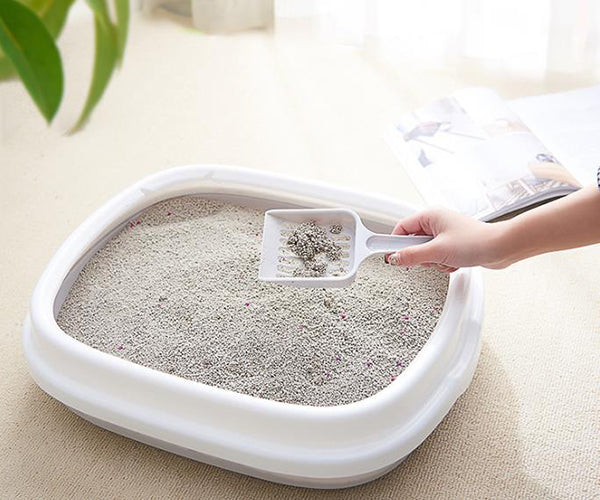
What if your cat doesn't want to defecate in the litter box?
If your cat doesn't want to defecate in the litter box, it could be for a variety of reasons. Here are some possible solutions:
First, check the litter box and the environment
1. Cleanliness of cat litter box:
- Make sure the litter box is cleaned at least once a day to remove clumps and feces, and replaced with new litter regularly. Dirty or smelly litter boxes can discourage cats from using them.
- Deodorant sprays can be used to reduce odors, but choose products that are not harmful to cats.
2. Location of the litter box:
- Place the litter box in a quiet, secluded and well-ventilated area, avoiding noisy, busy or unpleasant places for cats.
- Make sure there are no barriers around the litter box for easy access.
3. Size and type of litter box:
- Choose the right litter box size for your cat's size. The litter box should be spacious enough for the cat to comfortably turn around and dig the litter.
- If your cat doesn't like the current litter box type, try replacing it with a different type of litter box, such as open, semi-enclosed or fully enclosed.
Second, adjust the litter
1. Types of cat litter:
- Experiment with different types of litter to find the texture and taste your cat likes. Some cats may be allergic to certain litter or dislike the smell.
- Avoid using strongly scented litter, which may cause discomfort to your cat.
2. Thickness of cat litter:
It is generally recommended that the thickness of the litter be at least 5-7 cm, so that the cat has enough space to dig and bury the feces.
Third, observe your cat's health
1. Check if your cat is unwell:
- Observe your cat's mental state, appetite and bowel movements. If your cat shows signs of discomfort or abnormal behavior, you should take it to the veterinarian for a check-up.
Pay special attention to urinary infections, constipation, or other conditions that may affect bowel movements.
2. Effects of estrus:
- If your cat is not neutered and in heat, it may exhibit open defecation behavior. This is to mark territory and attract the opposite sex. Consider spaying or neutering your cat after the end of heat.
Fourth, behavior guidance and training
1. Step by step guide:
- Put your cat in the litter box about half an hour after eating and guide it to defecate. Because cats usually need to excrete at this time.
- After your cat has successfully defecated in the litter box, give rewards and praise, such as small treats or petting, to reinforce the behavior.
2. Avoid Punishment:
- Do not punish your cat if it defecates outside the litter box, as this may make it more afraid of the litter box. Instead, bring it to the litter box and gently pat the rim of the litter box to guide it into the litter box.
Fifth, consult a professional
Step 1 Seek veterinary advice:
- If the above methods do not solve the problem, it is recommended to consult a veterinarian or professional pet behavior counselor. They can provide more specific advice and treatment options.
To sum up, the problem of cats unwilling to defecate in the litter box needs to be solved from several aspects, including checking the litter box and environment, adjusting the litter, observing the cat's health status, conducting behavioral guidance and training, and consulting a professional. With patient and careful observation and adjustment, a solution to the problem can usually be found.
